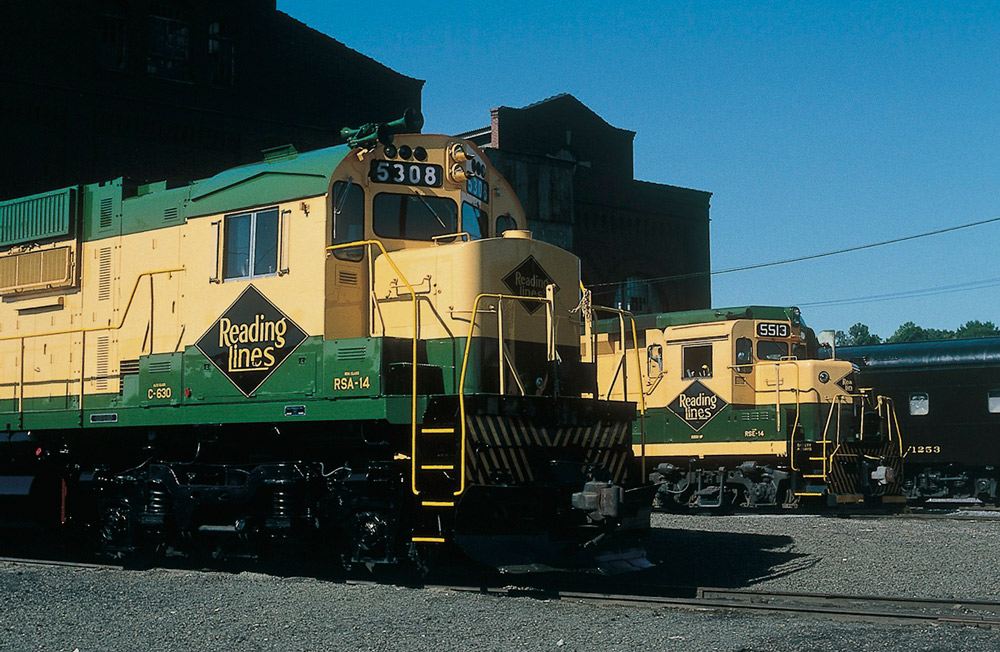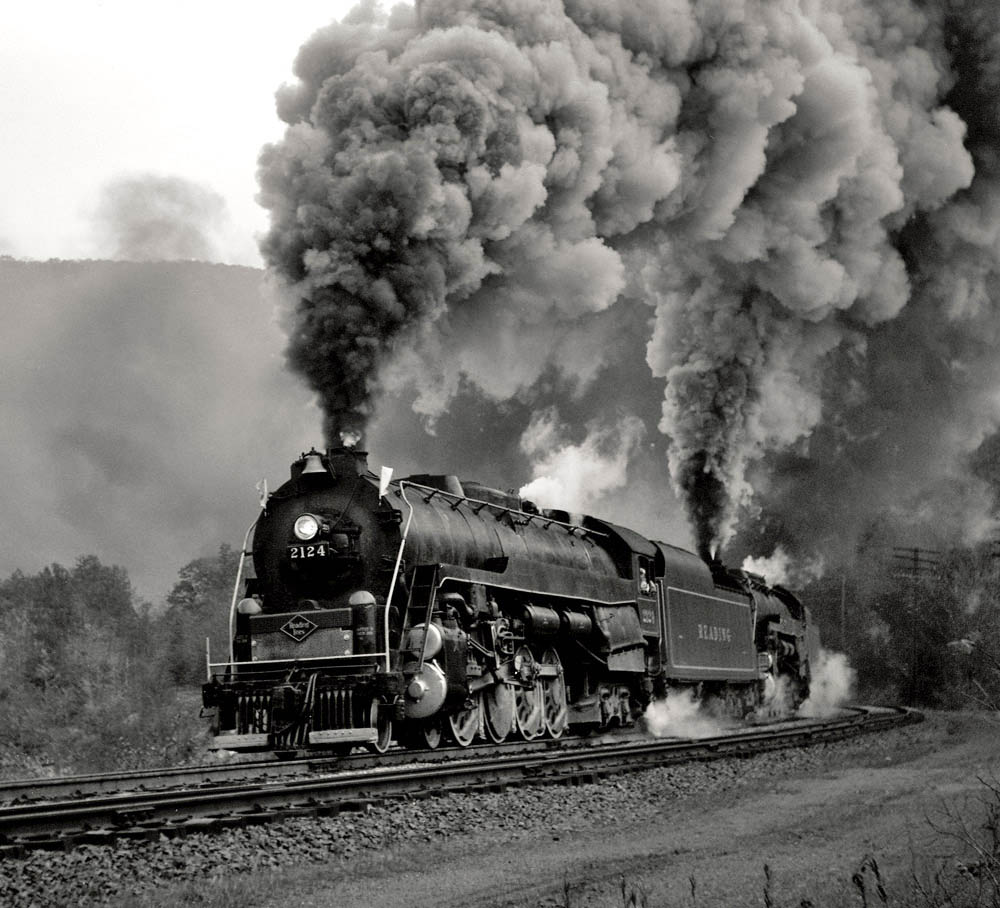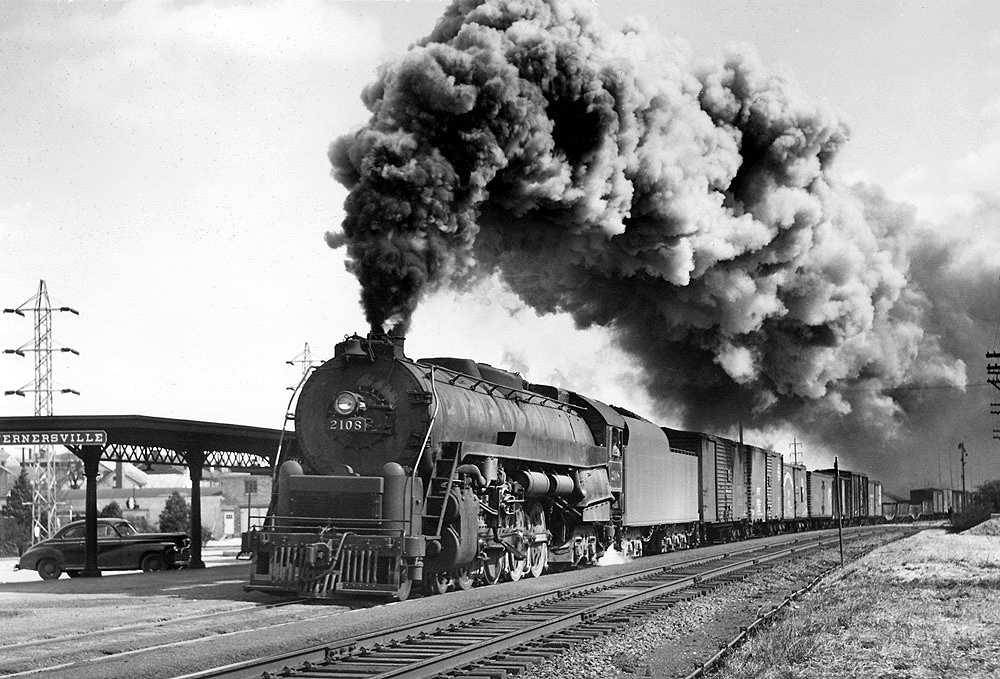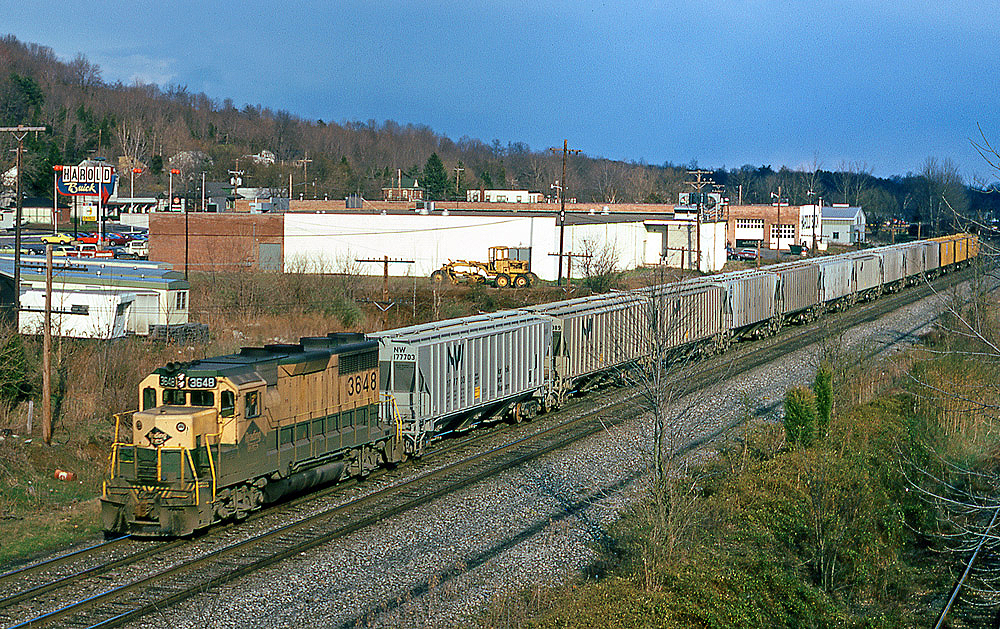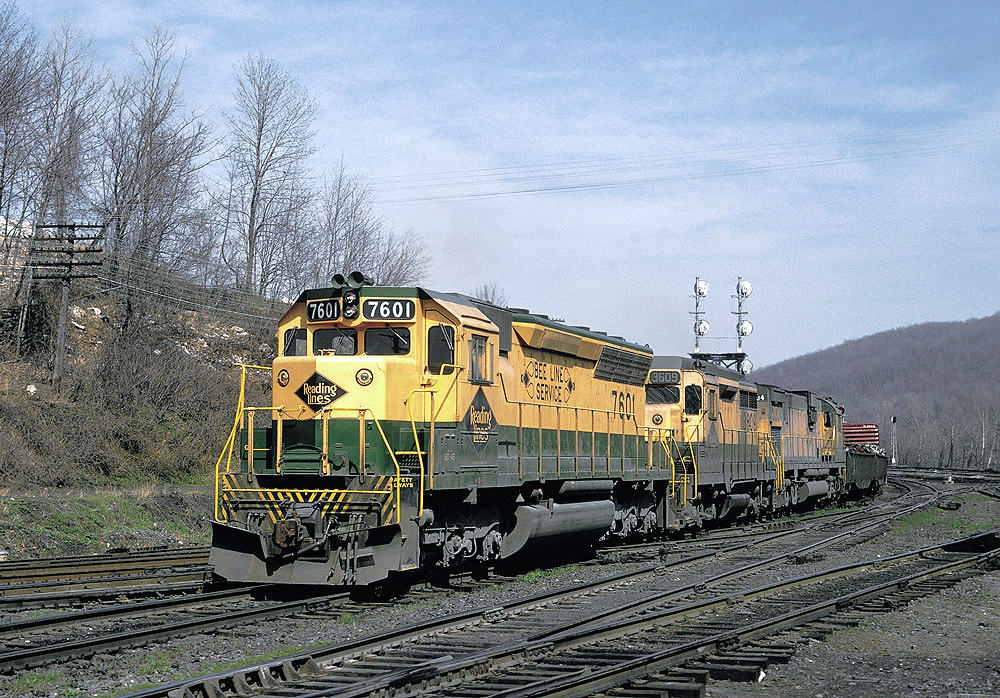A pair of long-time display pieces at Steamtown are also leaving the property in the near future, departing for better pastures. It was announced that SMS Rail Lines has purchased the two Reading FP7s, #902 and #903, with intent to move them to their Woodstown Central passenger subsidiary for a return to operation.The Reading purchased the #902 and #903, along with six other EMD FP7s, in 1950 to bump the remaining G-3 Pacifics off the big passenger trains, leaving them on PRSL commuter runs, while EMU cars handled just about everything else on the Reading property. The FP7s worked their way east from Illinois on B&O passenger trains (the B&O had a large interest in the Reading, mostly to use the CNJ, which the Reading owned, to make their way into New York City via New Jersey) and then were delivered to the Reading. They handled the Wall Street, the Crusader, and the Schuylkill predominantly, throughout the '50s, and they also handled frequent fan excursions and even helped out on the Iron Horse Ramble when too many of the T-1s came up lame, or the trip was headed over a branch that couldn't support the big Northern's axle loadings. After the loss of the RPO contract in the early '60s though, Reading began replacing most of the named train runs to New York with RDCs, diminishing the need for the FP7s, although Reading did institute a "push-pull" train between Reading and Philadelphia, using an FP7 on each end of the train connected by a pass-through MU cable on the passenger cars.
FP7s #904 and #905 were scrapped in 1965-1966, and #906 was traded to EMD the following year toward the purchase of the SD45s. In 1970, locomotives #901 and #907 were also traded to EMD, leaving only #900, #902 and #903 on the roster. Two units powered the "push-pull" train, with one unit held in reserve to be rotated in and out as needed. The three remaining FP7s were conveyed to SEPTA in 1974, when SEPTA took over Reading's commuter runs, and they remained in service there until 1981, handling the same "push-pull" run, when SEPTA ceased all diesel-powered operations in 1981.

After retirement, the trio of FP7s went up for sale in September of 1983, and the PA preservationists jumped at the chance to save them. The Lancaster County chapter of the NRHS purchased #900 and #902, with the intent to donate them to the Railroad Museum of Pennsylvania, while the Philadelphia chapter of the NRHS purchased the #903. All three were stored at the RRMoPA, and restoration was begun on the #902 and #903 in 1986. By 1995, the #902 and #903 were operational and rattled around the area on a number of excursions, including a particularly special one from Philadelphia to Leaman Place and then up the Strasburg (making them the only outside excursions to run up Strasburg without a change in power). In 2007, after long-running negotiations with the RRMoPA fell through, the Lancaster County NRHS decided to donate the #902 and the unrestored, inoperable #900 to the Reading Company Technical & Historical Society, located in Hamburg, PA, with the #900 being moved to the museum proper over the Reading & Northern. They ran their last trips on ex-Reading lines operated by the Penn Eastern in 2008, and then were moved to Scranton in 2009.
In January 2010, the #902 and #903 were officially loaned to for a year to Steamtown, with the agreement that Steamtown would maintain the locomotives in exchange for excursion rights. They ran a few excursions in 201, but then were parked the same year, due to a rumored bad truck on the #902 and the wheels on both locomotives needing to be trued up and re-profiled. Steamtown, which had the NKP GP9 and the two "DL&W" ex-BAR EMD F3s at their disposal, never returned the FP7s to operation, preferring to display them next to Reading T-1 #2124. Despite the lease being a one year term originally, the lack of storage space owned by the Philadelphia NRHS for #903, and the RCT&HS had enough on their plate to warrant #902 back, so they've sat at Steamtown for the past 13 years.

Well, until yesterday's announcement. SMS Rail Lines approached both the Philadelphia NRHS and the RCT&HS to propose a 10-year lease for a return to operation and use on the new Woodstown Central. The Philadelphia NRHS said they held a discussion on the proposal and came to the conclusion that, unlike the RCT&HS, they lack a place to store and work on the #903, and they also realized that most of the members who had helped perform the original restoration and had mechanical knowledge of the #903 had since passed away. They held a vote, and the end result was that of the twelve officers, nine voted to actually outright sell the #903 to SMS, two voted to enter into the lease agreement, and the last proposed outright donating the #903 to the RCT&HS. Reports indicate that the #902 will also be making the move to Bridgeport, NJ, SMS's shop location, but it's not currently known if the RCT&HS is also selling the #902 to them, or just taking the 10-year lease deal.























